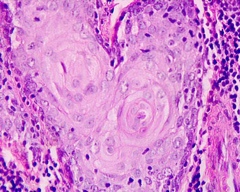Cancer Biology, Ageing, Genomics and Bioinformatics
Cancer is one of the leading causes of death, in particular in modern societies since age is the key risk factor for most types of tumours. Even though many cancer-related genes have been identified, new diagnostic and molecular targets are of great importance. The post-genome era has made possible large-scale molecular analysis of tumours and cancer cell lines. Indeed, massive amounts of data, such as microarray data, have already been generated in oncogenomics and are available in public databases. We are taking advantage of these datasets together with algorithms and bioinformatics pipelines to gain new insights on cancer, which we can then test experimentally. Moreover, we are interested in helping unravel the relationship between cancer and ageing.
In one work, we examined the effect of genetic variation on survival as a function of age in cancer patients. We found that survival patterns differed between genotypes for a number of polymorphisms, genes and pathways. These observations demonstrate that there are genetic elements involved in the ageing process that can differentially affect mortality among cancer patients in an age-dependent manner. In turn, understanding the genetic determinants that affect prognosis in cancer patients differently with age will be invaluable to develop age-specific prognostic biomarkers and personalized therapies that may improve clinical outcomes for older individuals.
Moreover, in another work, we compared genes differentially expressed with age, cellular senescence and cancer among human tissues. We observed that genes differentially expressed with age surprisingly tend to change in the opposite direction of genes differentially expressed in cancer. The overlapping genes between cancer and ageing were related to different processes, including immune-related genes and, most prominently, cell cycle-related genes which were down-regulated with ageing but up-regulated in most cancers. Intriguingly, the uterus was an exception to the patterns we observed, which opens new lines of research. By contrast, our cellular senescence signatures showed changed in the opposite to genes differentially expressed in cancers, highlighting the tumor suppressor role of cell senescence.
In another project, we employed a computational candidate gene prioritization method developed in our lab, called GeneFriends, to identify new candidate cancer-related genes which we then validated experimentally. The unstudied C1ORF112 gene, in particular, appears to be overexpressed in various tumors and is important for growth of cancer cell lines, and thus we are currently further studying this gene and its protein product.
We are also studying the naked mole-rat, a long-lived, cancer-resistance rodent which may give insights into human cancer resistance.
In a previous project, we performed a genome-wide scan to identify genes whose expression across healthy organs correlates with mass-normalized, organ-specific cancer incidence.

